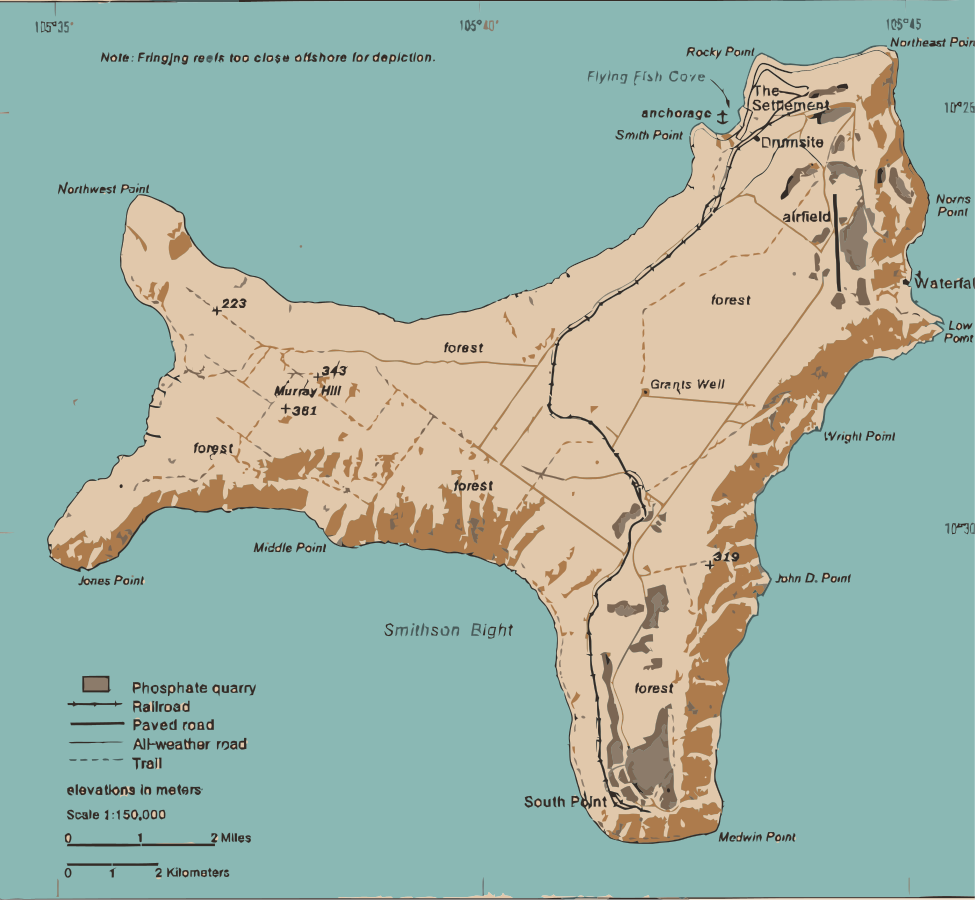
I wonder whether a ship captain was pleased to spot land on an auspicious day? I can imagine that assigning names according to the calendar might remove the challenge of thinking something creative or avoid the political intrigue involved in selecting a VIP to honour. Perhaps the islands named Wednesday, Thursday, Friday and Sunday were particularly difficult to name. Moving on to all things seasonal however, there are two islands named Christmas, Kiritimati in the Pacific (pronounced Christmas and named by Captain Cook) and Christmas Island in the Indian Ocean.
The Christmas Island featuring in today’s blog post was named by Captain William Mynors who sailed by in the East India Company ship Royal Mary in December 1643. Captain Swan was the first European to actually visit in 1688, and William Dampier reported the island as uninhabited after his landing in 1699. It lies in the Indian Ocean, about 220 miles south of the Indonesian island of Java and is now an Australian Territory.
Mineral surveys carried out by Dr John Murray during the 1872-76 HMS Challenger expedition predicted that there would be a good source of phosphate in the region, and Britain annexed the island in 1888 with a view to mine for rock phosphate. The major use of mined phosphate is to make plant fertilisers, but it is a finite resource which could run out in future. Phosphate contains phosphorous (the P in NPK fertiliser) which is an essential element for life. As well as using phosphorous in DNA strands and cell membranes, it is important in plants as a constituent of the chemical which is produced to capture energy from the sun. Plants with a phosphate deficiency become stunted, crops show a reduced yield and leaves may develop purple-tinges.
From 1897 to 1898 William Charles Andrews, a geologist from the British Museum, surveyed the island before mining started, including an assessment of the local flora and fauna. These herbarium sheets are some of the specimens collected during his 10 month long reconnaissance trip. Many more are held in the herbaria of the Natural History Museum and Kew, and the report of his voyage is available to read thanks to the excellent Biodiversity Heritage Library.
Christmas Island has a number of different ecosystems from the shore-line to the tropical rainforests of the plateau and is home to about 200 plant species, some of which are endemic. Endemics are species which are not found anywhere else in the world. With such limited geographical ranges, endemics are often targets of conservation efforts as they could be easily lost. Mining continues to be an important industry on Christmas Island, but part of the island is protected as an Australian National Park. The national park covers over 60% of the island as well as areas of its fringing coral reef.
References
Dictionary of British and Irish Botanists and Hoticulturalists by Ray Desmond
A monograph of Christmas Island (Indian Ocean); physical features and geology by Charles W Andrews
The Christmas Island tourist board: https://www.christmas.net.au/
For more on this and other fascinating herbarium facts visit Herbology Manchester
Editors note: If you are feeling the cold of a northern hemisphere at present then you might like to visit the ‘Plan your trip‘ section of the Christmas Island web site.
